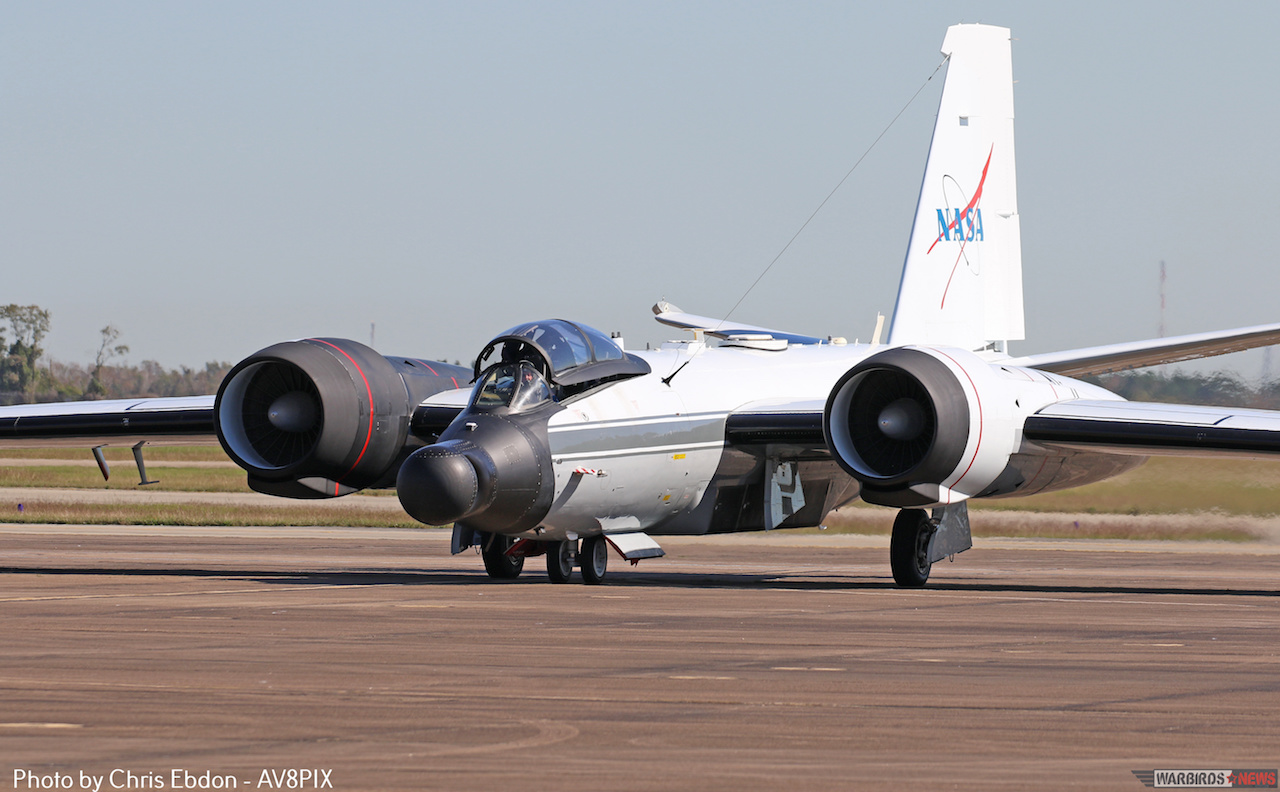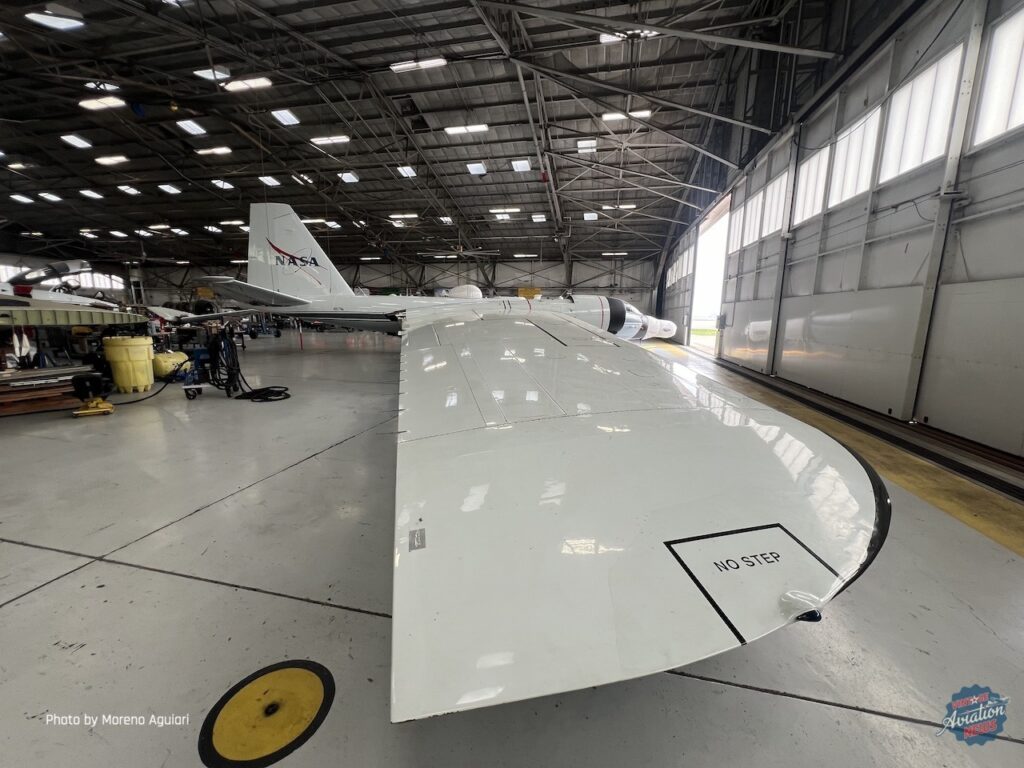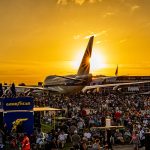In a classic swords-to-plowshares move, the two WB-57F Canberras flown by NASA’s Airborne Science Program will greet the shadow of the Moon as it rushes across the contiguous United States on Monday, April 8th, 2024 on a daring mission of science. The WB-57 is the ideal platform for these experiments because the aircraft can fly above most of the atmosphere, between 50,000 and 60,000 feet. At that altitude there isn’t as much dust or dirt to diminish the quality of imagery, so scientists can see infrared light from the sun that you can’t see from the ground.
The total solar eclipse moves across North America on Monday, April 8th traveling through Mexico, across the United States from Texas to Maine, and out across Canada’s Atlantic coast. Viewers can follow the official NASA broadcast from 1 am EDT here for live views of the eclipse path, expert commentary, and live demonstrations.
The NASA Johnson Space Center (JSC) in Houston, Texas is the home of the NASA WB-57 High Altitude Research Program. Three fully operational WB-57 aircraft are based near JSC at Ellington Field. These aircraft have been flying research missions since the early 1970s, and continue to be an asset to the scientific community with professional, reliable, customer-oriented service designed to meet all scientific objectives.
The WB-57 is largely based on the American-built Martin B-57 Canberra tactical bomber and reconnaissance aircraft that entered service with the United States Air Force in 1953. The B-57 is a license-built version of the British English Electric Canberra, a design which served with the Royal Air Force from 1951 until 2006.
The WB-57 is a mid-wing, long-range aircraft capable of operating from sea level to altitude over 60,000 feet. Two crew members are positioned at separate tandem stations in the forward section of the fuselage. The pilot station contains all the essential equipment for flying the aircraft while the sensor equipment operator (SEO) station contains both navigational equipment and controls for the operation of the payloads that are located throughout the aircraft. The WB-57 can fly for approximately 6.5 hours, range approximately 2500 miles, and carry up to 8,800 lbs of payload.
During the eclipse, the coordinates and timing have to be perfect so the planes can follow the exact position of totality. In the past, solar eclipses have driven numerous scientific discoveries. For this solar eclipse, NASA is funding several scientific experiments – including the three using the WB-57s – to make measurements during the eclipse. NASA’s WB-57s fly much higher than commercial aircraft. This altitude allows the jets to fly above clouds – meaning no chance of missing the eclipse due to bad weather. Additionally, the height puts the jets above most of Earth’s atmosphere, which allows for the cameras to take crisper images and capture wavelengths, such as infrared light, that don’t make it to the ground. Since the planes can travel at 460 miles per hour, they’re also able to extend the time they spend in the Moon’s shadow. While the eclipse will last no more than four and a half minutes at any point on the ground, the planes will see an eclipse that lasts about 25 percent longer, over 6 minutes and 22 seconds.
This isn’t the first time a rare aircraft has been used to chase an eclipse. As we cover in our article here, in 1973, Concorde F-WTSS was used to do so at supersonic speeds over Africa.
[wbn_ads_google_three]
NASA currently flies only two (#926 and #927) of the three WB-57s based at Ellington Field in Houston, Texas. The third airframe (#928) is undergoing major inspection and is on “Indefinite Hold” status. These two airframes, along the Temora Aviation Museum’s English Electric Canberra TT.18 WJ680, are the only three examples of the Canberra family still flying in the world. A few other WB-57s remain in storage at Davis Monthan, although it seems unlikely that these will serve as anything more than as parts sources for maintaining the small active fleet.
While anyone along the eclipse path with a clear sky will see the spectacular event, the best view might be 50,000 feet in the air, aboard NASA’s WB-57s.
Below are more photos from a recent visit by Vintage Aviation News to NASA Flight Operations at Ellington Field. We would like to again thank Kara Hueni, NASA Ops Flight Management Specialist, for facilitating our visit to this fascinating site.
To learn more about the goals of the WB-57s’ mission visit NASA’s Eclipse 2024 Science website here. The mission will be livestreamed on YouTube at this link.













































